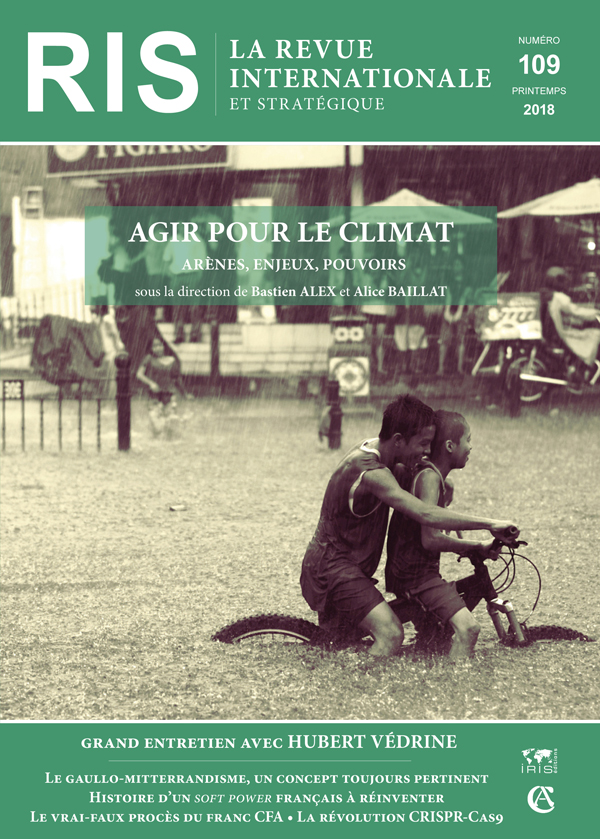Équilibres internationaux et mondialisation
Mars 2018
From “Spoiler” to “Bridging Nation”: The Reshaping of India’s Climate Diplomacy / By Dhanasree Jayaram
 Agir pour le climat : arènes, enjeux, pouvoirs
Agir pour le climat : arènes, enjeux, pouvoirs
RIS 109 - Printemps 2018

India has been central to the international climate order since the beginning of the climate change negotiations in 1992, especially in setting an equitable agenda and creating norms such as the Common but Differentiated Responsibilities (CBDR, 1992). Yet, it has been often labelled a “spoiler”, a tag that got emboldened at the 2009 United Nations Climate Change Conference in Copenhagen when India, along with China, Brazil and South Africa (BASIC), successfully thwarted the attempts of the United States (US) and the European Union (EU) to dilute the longstanding differentiation between Annex I parties (developed countries) and non-Annex I parties (developing and least developed countries) to the United Nations Framework Convention on Climate Change (UNFCCC). Although the decision to adopt voluntary targets at the Copenhagen Summit – such as to reduce the emissions intensity of its gross domestic product (GDP) by 20-25 % against 2005 levels by 2020 – could be regarded as one of
Cet article est en accès libre sur Cairn.


